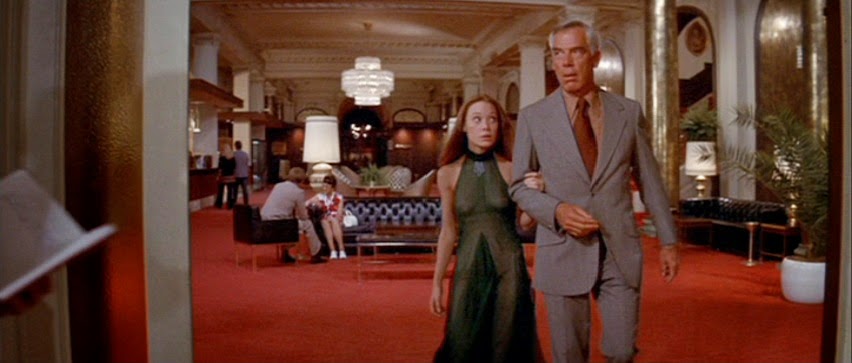
Prime Cut (1972) opens in Kansas with a montage following the progress that a cow makes from the barn to the burger packing machine. Then, we following the “excess” meat as it is turned into hotdogs. It takes only a moment to realize, via an insert shot of a shoe on a conveyor belt, that these links are made of human parts. From there, the film moves to Chicago where the Irish mob enlists the aid of Nick Devlin (Lee Marvin) to deal with their problems in the Jayhawk state.
Lee Marvin, playing a similar character to the ones he played in The Killers (1964) and Point Blank (1967), quickly rescues Poppy (Sissy Spacek) from a sex slave auction being held at Mary Ann’s (Gene Hackman) meat packing plant. After that, the film follows the typical beats of this brand of thriller sub genre. The hero becomes a “daddy” to the victim while the villains plot her return and the annihilation of the hero and the gangsters who he is working for.
Robert Dillon’s script is full of local color and detail that keep Prime Cut elevated above the usual grindhouse tropes. Dillon, who wrote The French Connection II (1975), treats his narrative as black comedy, satirizing the commodification of human beings; juxtaposing the images of the meat packing plant with images of human trafficking. While this may seem a little on the nose, it never feels as campy as it sounds. The issue is that, despite Dillon’s gifts as a writer, the basic premise itself speaks more to systemic chauvinism in our society without ever reckoning with the role that the white male savior, meat packers, and evil henchman play in this system.
Michael Ritchie, who also directed The Candidate (1972) and Downhill Racer (1969), lends the production tension, economy of shots, and a sense of masculine bravura. While this suits the pulpy tone of Dillon’s writing, Ritchie’s style also undermines the role of women within the film. Sissy Spacek’s Poppy is never validated as a character and works more as a prop for Marvin’s Devlin than anything else.
Up until Lee Marvin yanks Sissy Spacek free from a pig pen Prime Cut is pretty compelling. After that, even with some nice set pieces, the film becomes all too familiar given the more recent popularity of films like Taken (2008) and all of its sequels and imitators. The real highlight for me was Gene Hackman. Seeing Hackman play these kinds of campy villains, like in The Hunting Party (1971), is so much fun. Hackman can really chew up the scenery without ever compromising a spectator’s suspension of disbelief. Add to that the fact that Hackman’s character Mary Ann speaks almost entirely in meat packing metaphors and you’ve got gold.
